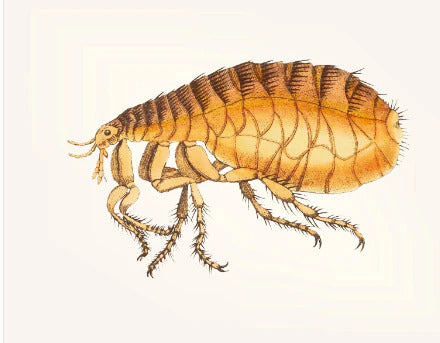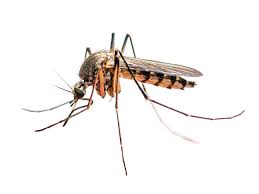
As our furry companions venture into the great outdoors or even cozy indoors, they face the ever-present threat of external parasites and insect bites. From the dense foliage of wooded areas to the snug confines of our carpets and furniture, these pests lurk, waiting to latch onto our pets. Fleas, ticks, and other tiny bloodsuckers cause skin irritation and pose serious health risks.
Without proper treatment and prevention, these parasites can unleash a barrage of infections and diseases upon our beloved pets. Understanding the diverse parasitic diseases is crucial for effective treatment and prevention strategies. By familiarizing ourselves with the different ailments, we can better safeguard our furry friends against the perils lurking in their environment.
Ticks Can Spread Diseases

Ticks are stealthy hitchhikers of the animal world. They latch onto passing creatures and find refuge in the verdant embrace of vegetation. While their presence may seem innocuous, the diseases they transmit can wreak havoc on humans and animals alike.
Ticks are notorious carriers of many diseases, from flea allergic dermatitis's itchy torment to tapeworm infections' insidious grip. Anaplasmosis, Babesiosis, Lyme disease, Ehrlichiosis, and Rocky Mountain illnesses stand out as significant threats these tiny arachnids transmit.
The symptoms of these diseases range from fever and lethargy to joint discomfort, swelling, and limping. Lymph nodes may enlarge, signaling the body's struggle against these invasive pathogens. Left unchecked, these ailments can escalate into catastrophic cardiac and neurological complications and, in severe cases, kidney failure, proving fatal to their unfortunate hosts.
Fleas Can Spread Diseases

Our furry companions, dogs and cats, are perpetually besieged by fleas, those persistent pests of the pet world. However, the consequences of flea infestation extend beyond mere irritation. Enter Dipylidium caninum, a minuscule intestinal worm that infiltrates our pets' bodies when they ingest fleas to alleviate their torment.
But the troubles don't end there. Another lurking threat is cat scratch disease, scientifically known as bartonellosis. This bacterial infection, spread by fleas, can occasionally leap from our feline friends to humans through scratches, causing discomfort and complications.
The aftermath of flea bites can manifest in various ways for our beloved dogs. From constant itching and skin irritation in areas beyond the actual bites to hair loss and a plethora of dermatological disorders, the effects of flea infestation can be profound and far-reaching.
Fleas Can Spread Tapeworms

In the ongoing battle against fleas, our canine companions may inadvertently ingest these pesky parasites while attempting to alleviate the discomfort of flea bites through biting, licking, or grooming their fur. This seemingly innocuous act, however, can lead to unforeseen consequences if the ingested fleas happen to harbor tapeworm larvae.
Once inside the digestive tract, these tapeworm larvae latch onto the intestinal lining, establishing a foothold in their unwitting host. Suppose your dog falls victim to tapeworm infection. In that case, you might observe telltale signs, such as worms or segments near your dog's hindquarters, indicating the insidious presence of these intestinal parasites.
Sandfly-Transmitted Diseases

Sandflies, those diminutive aerial creatures, can disseminate the agent responsible for leishmaniasis to humans, dogs, and, on rarer occasions, cats. While this disorder traditionally thrives in the Mediterranean region, its reach steadily expands northward, posing an escalating threat to vulnerable populations.
In some unfortunate cases, pets may harbor a covert infection, exhibiting no outward symptoms or discernible warning signs. However, as the disease progresses, clinical manifestations emerge. Initially manifesting as small bumps or nodular lumps, these lesions may evolve into skin ulcers adorned with scabs or crusts, undergoing morphological changes. Despite their typically painless nature, these lesions can be a source of discomfort. Furthermore, individuals may notice swollen glands near the affected areas, mainly if the lesions are located on the arms or hands, adding further complexity to the clinical presentation of this insidious ailment.
Mosquitoes Spread Illnesses

Heartworm disease poses a significant threat, with mosquitoes as vectors for transmitting this insidious ailment. Once nestled beneath the skin, these parasitic worms have a propensity for infiltrating the blood vessels of the heart, where they wreak havoc on cardiac function.
The symptoms exhibited by afflicted dogs can vary widely, ranging from a persistent cough to the ominous specter of heart failure. However, in some cases, dogs may show no discernible signs of illness, further complicating the diagnostic process. Although typically harboring fewer worms, cats are particularly vulnerable to the larvae, which can incite a severe, asthma-like inflammatory response.
Respiratory complications stemming from this inflammatory reaction can prove fatal, underscoring the severity of heartworm disease. Moreover, the financial burden associated with treatment can be substantial once the disease has taken hold in your pet. For dogs, treatment typically involves a series of injections administered over a month to eliminate adult heartworms. Regrettably, no specific treatment exists for cats, leaving only supportive care as an option to alleviate their suffering.
Treatments To Prevent Flea And Tick Bites, And Why Are They Crucial?
Protecting your furry friend from the perils of fleas and ticks is paramount, given their potential to harbor and transmit diseases. Fortunately, various preventative medications exist to shield your dog from these blood-sucking parasites. These preventatives can be administered regularly and safely to thwart flea and tick infestations before they take hold.
There are three primary types of preventative treatments available, each differing in its method of administration: oral, spot-on, and collar-based. These treatments are typically applied monthly or regularly to ensure continuous protection. They eradicate existing fleas and ticks and prevent their population growth and the likelihood of re-infestation.
For a comprehensive selection of these preventative treatments, consider browsing 79Pets. With a wide array of trusted brands and top-selling products at discounted prices, 79Pets offers convenience and reliability in one place. Here are some popular preventative treatments you can explore for your beloved pet.
Nexgard - Afoxolaner
Suitable for: Dogs and puppies above eight weeks of age
Use for: Flea and tick treatment
Treatment Period: 30 days
Bravecto - Fluralaner
Suitable for: Dogs above eight weeks of age
Use for: Flea and Tick treatment
Treatment Period: 90 days
Simparica Trio - Sarolaner, Moxidectin, and Pyrantel
Suitable for: Dogs above eight weeks of age
Use for: Heartworm prevention treats Ticks and Fleas, Roundworms, and Hookworms.
Treatment Period: 30 days
Revolution Plus - Selamectin and Saraloner
Suitable for: Cats above eight weeks of age
Use for: Fleas, Ticks, Ear mites, Roundworms, Hookworms, Heartworms
Treatment Period: 30 days
Heartgard Plus - Ivermectin/Pyrantel
Suitable for: Dogs above six weeks of age
Use for: Prevention of Heartworm and treatment of internal parasites
Treatment Period: 30 days
The Bottom Line
These minuscule parasites wield more power over our pets than meets the eye. Yet, timely preventative measures can prove immensely beneficial. In addition to administering preventive treatments, ensuring your pet receives the proper nutrition and good hygiene practices can significantly enhance their well-being. A balanced diet fortified with essential nutrients will bolster your pet's immune system. At the same time, regular grooming and bathing will reduce the likelihood of flea and tick infestations, promoting long-term health and vitality.











